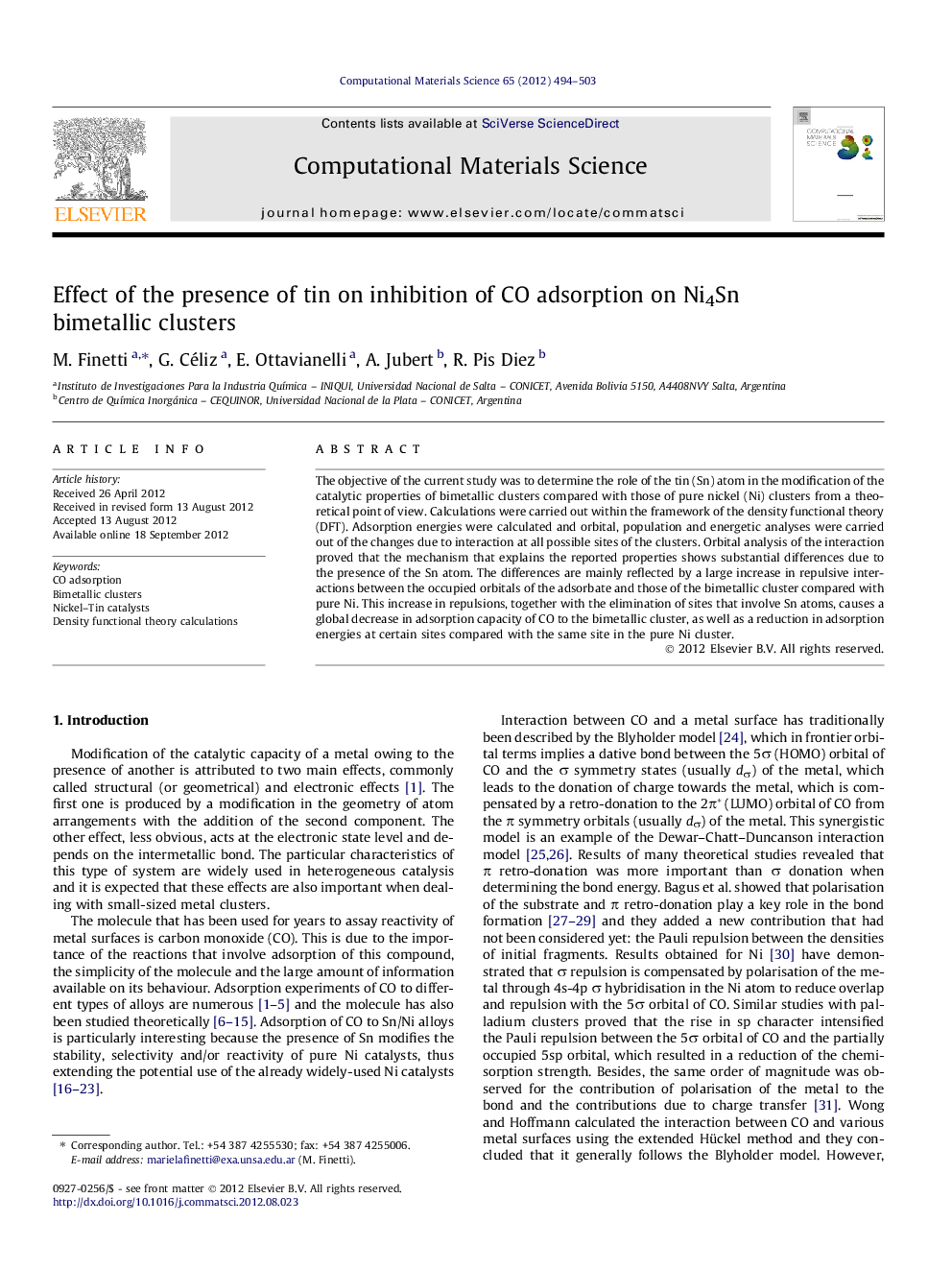| Article ID | Journal | Published Year | Pages | File Type |
|---|---|---|---|---|
| 1561660 | Computational Materials Science | 2012 | 10 Pages |
The objective of the current study was to determine the role of the tin (Sn) atom in the modification of the catalytic properties of bimetallic clusters compared with those of pure nickel (Ni) clusters from a theoretical point of view. Calculations were carried out within the framework of the density functional theory (DFT). Adsorption energies were calculated and orbital, population and energetic analyses were carried out of the changes due to interaction at all possible sites of the clusters. Orbital analysis of the interaction proved that the mechanism that explains the reported properties shows substantial differences due to the presence of the Sn atom. The differences are mainly reflected by a large increase in repulsive interactions between the occupied orbitals of the adsorbate and those of the bimetallic cluster compared with pure Ni. This increase in repulsions, together with the elimination of sites that involve Sn atoms, causes a global decrease in adsorption capacity of CO to the bimetallic cluster, as well as a reduction in adsorption energies at certain sites compared with the same site in the pure Ni cluster.
Graphical abstractFigure optionsDownload full-size imageDownload as PowerPoint slideHighlights► CO adsorption on Ni. ► Inhibition of adsorption on Ni catalysts by Sn addition. ► Energetics and molecular aspects of mechanism of CO adsorption on Sn–Ni catalysts. ► Reduction of CO adsorption sites by repulsion with Sn.
